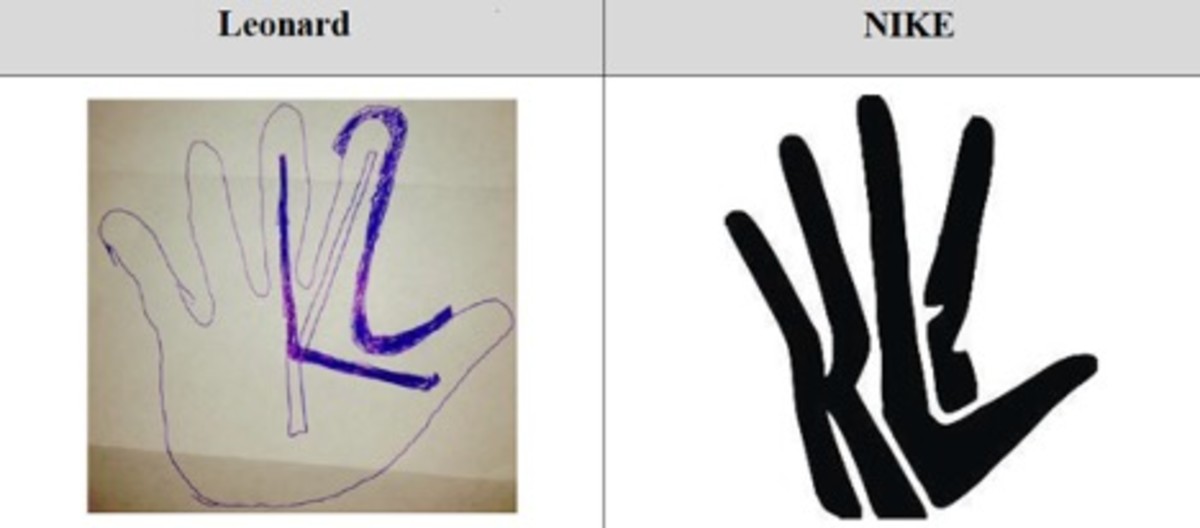Kawhi Leonard Loses Copyright Lawsuit Against Nike Over Logo
Kawhi Leonard is closely identified with the Klaw logo. When you see the logo, you think of him. But as the Los Angeles Clippers star learned on Wednesday, the logo being about Leonard doesn’t make him its owner. According to a new ruling by a federal judge, the logo belongs to Nike.
Last summer, Leonard and Nike filed dueling lawsuits over ownership of the logo. The Crossover has in-depth stories on both cases.
The logo, of course, emphasizes Leonard’s distinctly large hands—the same hands that have been measured at 11.5 inches across and that have made the four-time All Star one of the NBA’s best defensive players. The logo also incorporates Leonard’s initials “KL” and his jersey number, 2. Leonard insists that he invented the logo while he starred for San Diego State from 2009 to 2011. As a rookie on the San Antonio Spurs during the 2011-12 season, Leonard recalls sharing a design of the logo with Nike, with whom he signed an endorsement deal.
Over the next several years, Nike relied on the design to develop related properties, including variations of the logo. However, Leonard insists that he retained final say over the logo’s appearance. As Leonard gradually morphed into a highly-marketable star during the 2010s, Nike sold various apparel and footwear featuring the Klaw logo. Leonard and Nike parted ways in 2018, with Leonard signing an endorsement contract with New Balance. Leonard has demanded a court declaration that he is the sole author of the logo and that Nike engaged in fraud by registering what he regards as “his” logo with the U.S. Copyright Office in Washington, D.C.
Nike, meanwhile, has sharply disputed Leonard’s retelling of facts and sued him for copyright infringement, breach of contract and fraud. Nike acknowledges that Leonard shared a sketch of a design back in 2011, but maintains its logo is sufficiently different—and superior—to the one Leonard envisioned. Nike also stresses that Leonard has admitted that Nike played an instrumental role in transforming his concept into a separate and marketable property. In 2014, Leonard was interviewed for the Nice Kicks story titled “The Oral History of Kawhi Leonard’s “Klaw” Logo.” The story quotes him as follows:
I came up with the idea of incorporating my initials in this logo. I drew up the rough draft, sent it over and they (Jordan Brand) made it perfect. I give the Jordan Brand team all the credit because I’m no artist at all. They refined it and made it look better than I thought it would ever be, and I’m extremely happy with the final version.
With logos, the visual test is important. Here are two Klaw logos:

The two logos are clearly similar in some ways. Both share the design of a hand, feature a similar position of a hand, and both refer to the letters “KL” and the number “2”. Those points help Leonard argue that Nike’s logo is merely derivative of his design. Yet the logos are unalike for several reasons, particularly with respect to the size and angle of the fingers, overall styles and how the two logos depict “KL” and “2”. Those differences advance Nike’s assertion that the logos are meaningfully different.
The two lawsuits were originally heard in the U.S. District Court for the Southern District of California but, at the behest of Nike last October, the litigation was moved to the U.S. District Court for the District of Oregon. U.S. District Judge Michael Mosman has presided over the case in Oregon. On Wednesday he dismissed Leonard’s claims with prejudice (meaning on the merits) and granted a motion confirming Nike’s ownership of the design.
The ruling, which is a victory for Nike’s attorneys from the law firms DLA Piper and Stoel Rives, was made “from the bench.” This refers to Judge Mosman verbally communicating his ruling after both sides’ attorneys had presented oral arguments during a hearing. The hearing took place over the phone, rather than in person (due to the coronavirus disease pandemic, many hearings for civil matters are being conducted by phone). Maxine Bernstein of The Oregonian reports on the phone call and Judge Mosman’s statements during it. Bernstein quotes the judge as distinguishing the two logos as independent pieces of intellectual property. Likewise, the judge regards Nike’s design as “new and significantly different” from the sketch Leonard drew as a college student. Judge Mosman’s ruling also indicates that he will separately issue a written opinion regarding Nike’s claims against Leonard.
Leonard can appeal a defeat at the district court level to the U.S. Court of Appeals for the Ninth Circuit. Leonard’s attorney, Peter Ginsberg, told Bernstein that he is “considering our options to protect Kawhi’s interests.'' In the meantime, the logo is a Nike property. Leonard therefore can’t license it to New Balance and other companies with whom he has signed endorsement deals. That doesn’t bar those companies from developing their own properties and designs with Leonard. To that point, New Balance markets Leonard-related apparel and footwear products that don’t show a claw. Those companies could conceivably offer to buy or license the Klaw logo from Nike; whether Nike would make a deal with a competitor is less clear.
We’ll keep you updated on additional developments in the litigation and logo battle.
Michael McCann is SI’s Legal Analyst. He is also an attorney and Founding Director of the Sports and Entertainment Law Institute at UNH Franklin Pierce School of Law.
